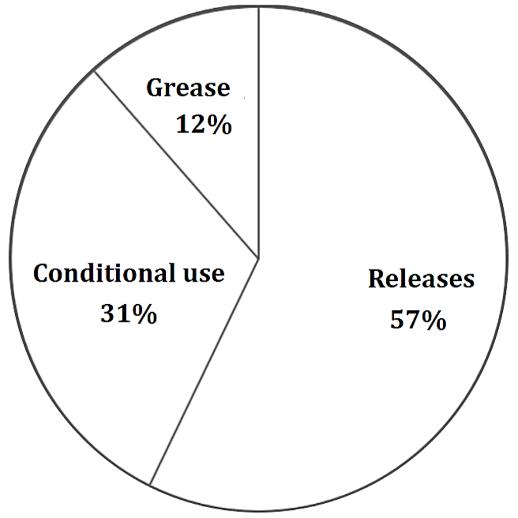Condemnation of pork carcasses by cannibalism in slaughterhouse from Northern Mesoregion Mato-rossense, Brazil
DOI:
https://doi.org/10.21708/avb.2021.15.3.9924Abstract
Among the disturbances resulting from stress is cannibalism, in the confinement of swines, it is caused by suffering environmental disturbances. Therefore, the aimed of this study was to analyze the rates of condemnation of swine carcasses for cannibalism in the period from January to April 2020 in a slaughterhouse located in the Northern Mesoregion Mato-grossense - Brazil. Data were conducted using ANOVA and Tukey Test (α=0.05). The study of proportions was also carried out as a statistical basis to calculate the percentage of destinations and the total amount of condemned swine carcasses. The averages of the condemned, released and used carcasses show a statistical difference (p<0.05) between the months studied. The monthly averages were 112.25 condemned carcasses (64.25 released, 35 used conditionally and 13 destined for rendering). In the total of carcasses condemned for cannibalism, there were values of 57.28% for release, 31.18% for conditional use and 11.58% for rendering, with a higher incidence in March. The incidence of cannibalism can be considered low in relation to the number of animals slaughtered in a four-month period. However, the economic impact must be taken into account, because the loss due to total conviction and conditional use cause significant financial losses. In addition, uncomfortable production environments have factors closely related to cannibalism, being difficult to control after the outbreak begins. Therefore, the incidence of cannibalism can influence the final carcass yield of swines slaughtered in the finishing phase.
Downloads

Downloads
Published
Issue
Section
License
Autores que publicam na Acta Veterinaria Brasilica concordam com os seguintes termos: a) Autores mantém os direitos autorais e concedem à revista o direito de primeira publicação, com o trabalho simultaneamente licenciado sob a Licença Creative Commons Attribution que permite o compartilhamento do trabalho com reconhecimento da autoria e publicação inicial nesta revista. b) Autores têm autorização para assumir contratos adicionais separadamente, para distribuição não-exclusiva da versão do trabalho publicada nesta revista (ex.: publicar em repositório institucional ou como capítulo de livro), com reconhecimento de autoria e publicação inicial nesta revista. c) Autores têm permissão e são estimulados a publicar e distribuir seu trabalho online (ex.: em repositórios institucionais ou na sua página pessoal) a qualquer ponto antes ou durante o processo editorial, já que isso pode gerar alterações produtivas, bem como aumentar o impacto e a citação do trabalho publicado (Veja O Efeito do Acesso Livre).


 Esta obra está licenciada com uma Licença
Esta obra está licenciada com uma Licença 